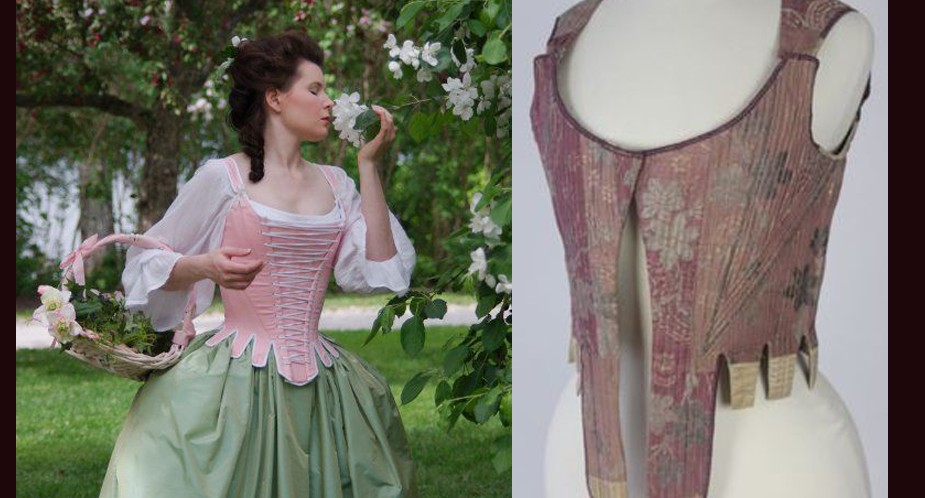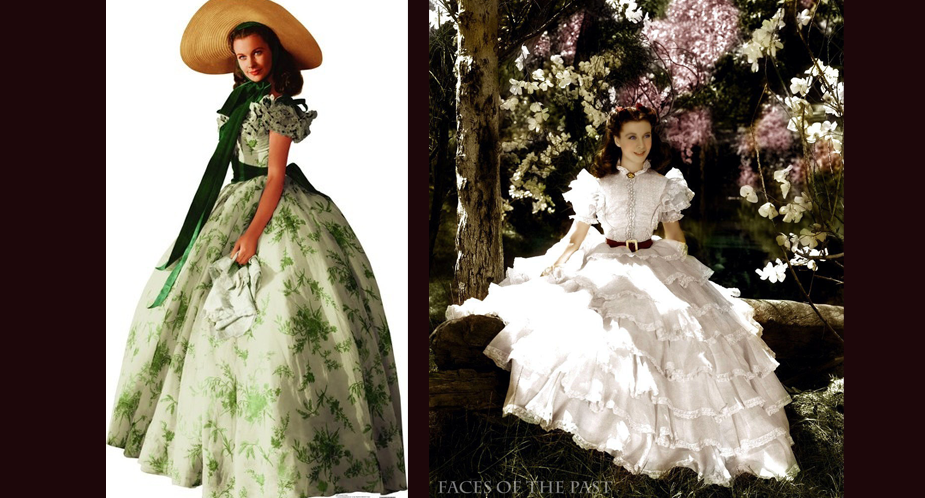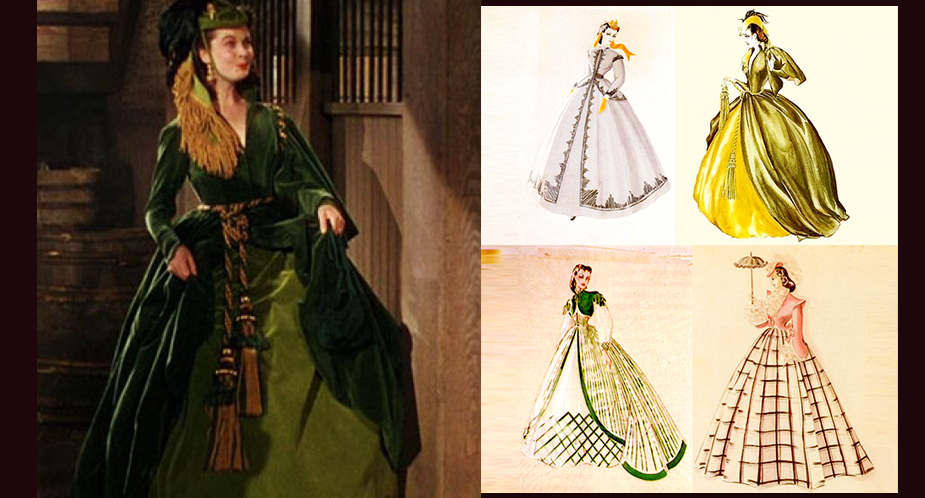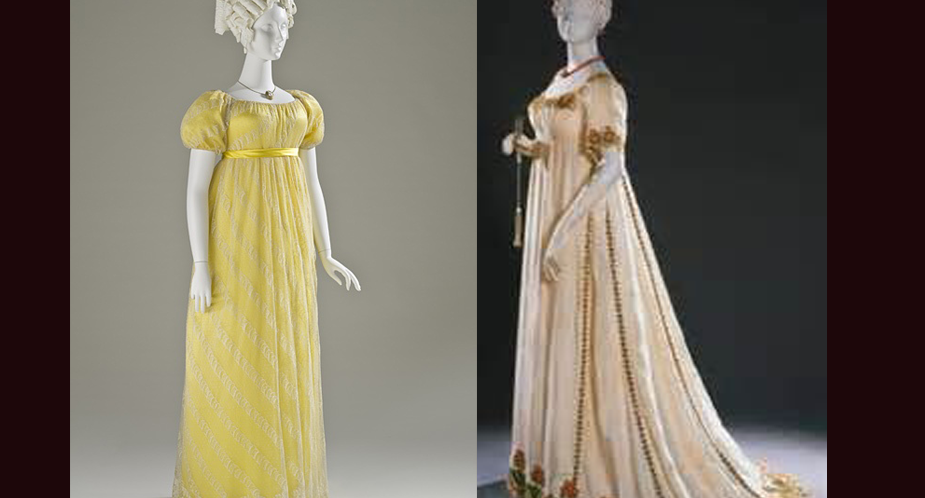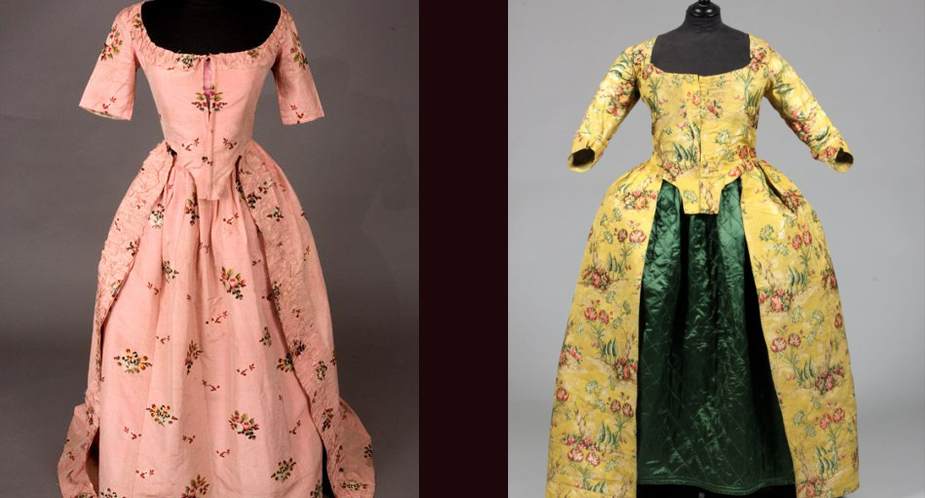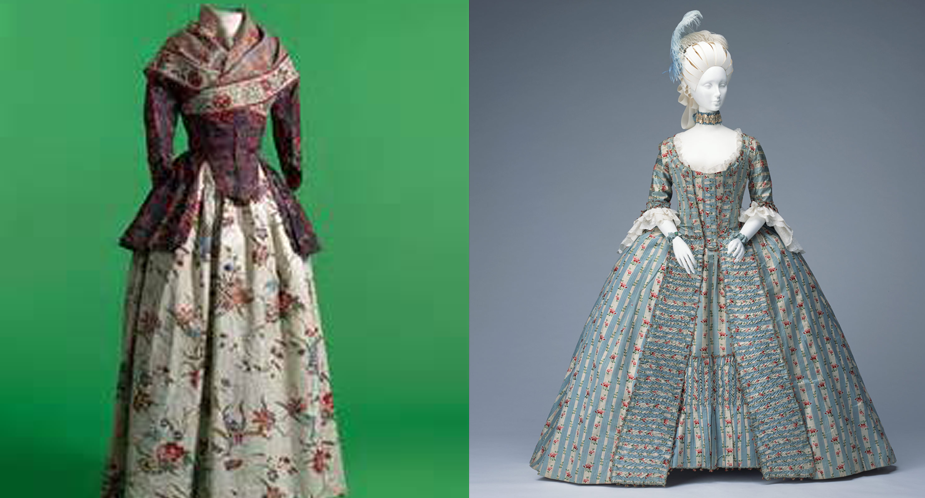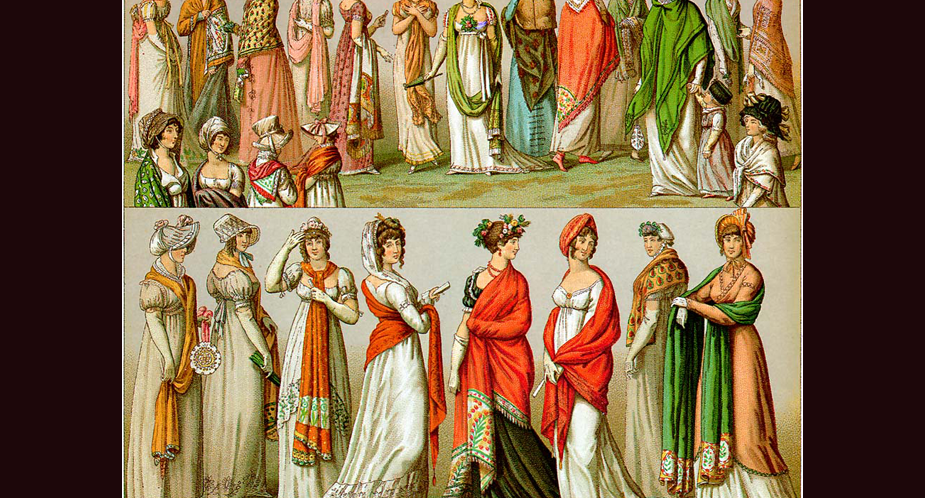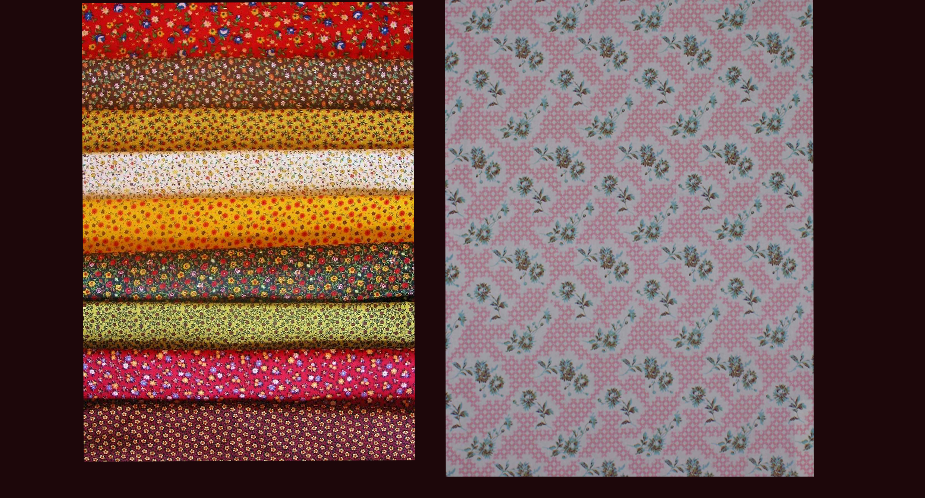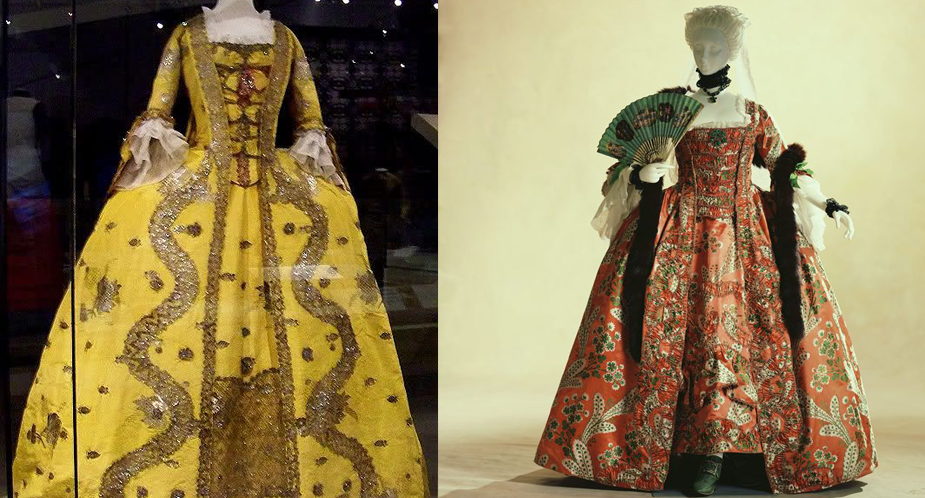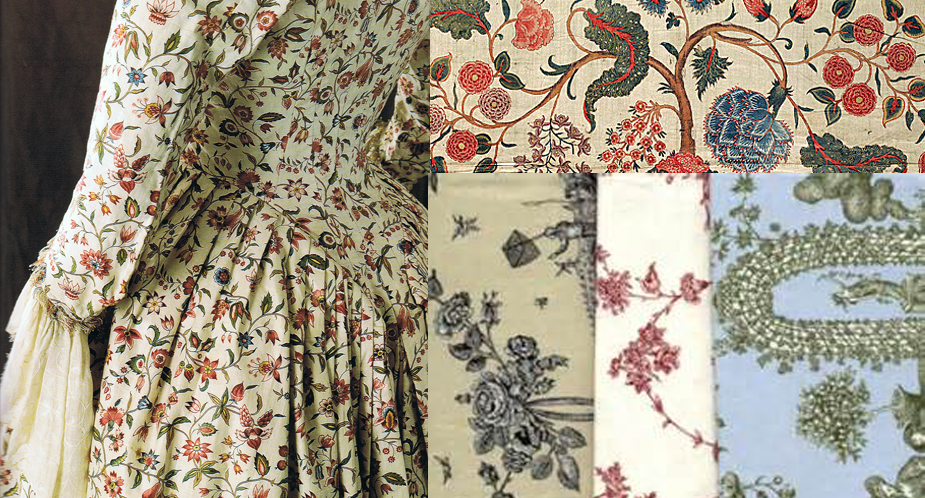… (with green trim typically) were the number one choice of women in the late 18th Century (1780’s-1800). (photos: 1770’s reproduction stays, & museum displayed 1770’s pink stays) NOTE: We know this is a re-enacter, because no respectable 18th century woman would be caught dead outside in her underwear!.. although …
